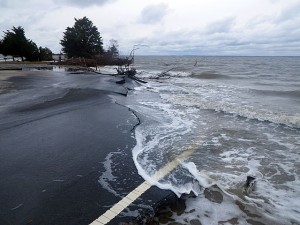 For years, scientists have been using satellite sensors to measure the levels of the Earth’s oceans. These sensors have reported that sea levels were not changing, and possibly even decreasing. This data was hailed by climate change skeptics, but now it turns out this data was simply wrong.
For years, scientists have been using satellite sensors to measure the levels of the Earth’s oceans. These sensors have reported that sea levels were not changing, and possibly even decreasing. This data was hailed by climate change skeptics, but now it turns out this data was simply wrong.
In fact, the sea levels worldwide have been rising every year, which means that scientists are unprepared for what comes next.
Scientists blame a calibration error in one of the satellites that was used for measuring sea surface height. Typically speaking, calibrating an instrument such as this satellite involves comparing the measurements of two instruments, one with a known magnitude or correctness against an instrument which measures the unit under the test.
Highly sensitive instruments must be calibrated often, but for obvious reasons it’s difficult to calibrate an orbiting satellite. It turns out that both of these calibrating instruments were programmed incorrectly, and a new analysis shows that instead of decreasing, the sea levels have risen from 1.8 millimeters every year in 1993 to currently 3.9 millimeters a year.
Oceanographer John Church was the first person to point out this discrepancy, as the sea level tide gauges didn’t match up with the results. Steven Nerem, a remote-sensing expert at the University of Colorado, agrees. He is leading the reanalysis of the sea levels and he believes this rise is due in part to global warming. However, he has also discovered other factors that could have attributed to the change, such as the 1991 eruption of Mount Pinatubo in the Philippines, melting ice caps in places such as Greenland, and the current El Nino weather pattern.
Nerem explains to Scientific American that if the sea levels continue to rise at this rate, the world’s oceans could rise around 75 centimeters in the next 100 years. This is in line with the projections from the Intergovernmental Panel on Climate Change.
Both Nerem and Church believe that finally understanding exactly what is happening with the sea levels can help us understand what is at stake and how policy makers need to address climate change sooner rather than later.
“All of this gives us much more confidence that we understand what is happening,” Church said. “The decisions we make now will have impacts for hundreds, and perhaps thousands, of years.”






